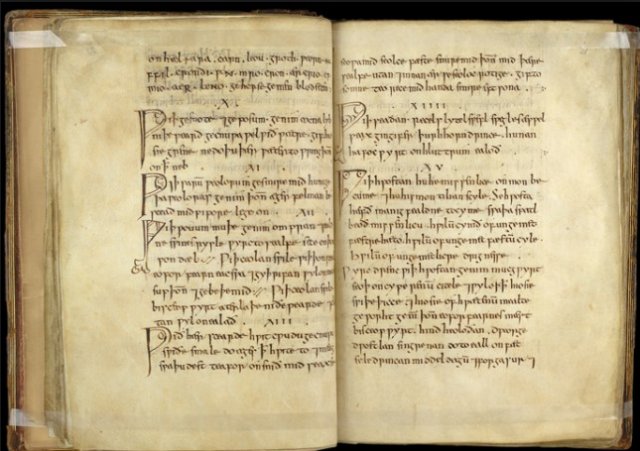MessageToEagle.com – A one thousand year old Anglo-Saxon medicine for eye infections originates from an ancient English manuscript found in the British Library.
This ancient medical textbook, the so-called Bald’s Leechbook, contains instructions on various treatments. One of many prescriptions is an ‘eye salve’, which includes garlic, onion or leeks, wine and cow bile.
In collaboration with microbiologists from the University of Nottingham’ s Centre for Biomolecular Sciences, Anglo-Saxon expert Dr Christina Lee recreated a 9th Century Anglo-Saxon recipe and tested the individual ingredients against the bacteria, as well as the remedy and a control solution.
They found the remedy killed up to 90% of MRSA bacteria and believe it is the effect of the recipe rather than one single ingredient.
The Old English leatherbound volume – Bald’s Leechbook – is widely thought of as one of the earliest known medical textbooks and contains Anglo-Saxon medical advice and recipes for medicines, salves and treatments.

“We were genuinely astonished at the results of our experiments in the lab. We believe modern research into disease can benefit from past responses and knowledge, which is largely contained in non-scientific writings. But the potential of these texts to contribute to addressing the challenges cannot be understood without the combined expertise of both the arts and science,’ Dr Lee said.
See also:
The Ebers Papyrus – Most Famous Plant Medicine ‘Encyclopedia’ Of Ancient Egypt
Could Ancient Textbooks Be The Source Of The Next Medical Breakthrough?
“Medieval leech books and herbaria contain many remedies designed to treat what are clearly bacterial infections (weeping wounds/sores, eye and throat infections, skin conditions such as erysipelas, leprosy and chest infections).
Given that these remedies were developed well before the modern understanding of germ theory, this poses two questions: How systematic was the development of these remedies?
And how effective were these remedies against the likely causative species of bacteria?
“We thought that Bald’s eyesalve might show a small amount of antibiotic activity, because each of the ingredients has been shown by other researchers to have some effect on bacteria in the lab – copper and bile salts can kill bacteria, and the garlic family of plants make chemicals that interfere with the bacteria’s ability to damage infected tissues,’ said University microbiologist, Dr Freya Harrison who led the work in the laboratory.
But we were absolutely blown away by just how effective the combination of ingredients was.
We tested it in difficult conditions too; we let our artificial ‘infections’ grow into dense, mature populations called ‘biofilms’, where the individual cells bunch together and make a sticky coating that makes it hard for antibiotics to reach them.
But unlike many modern antibiotics, Bald’s eye salve has the power to breach these defences.”
The fact that it works on an organism that it was apparently designed to treat (an infection of a stye in the eye) suggests that people were doing carefully planned experiments long before the scientific method was developed, according to researchers.
MessageToEagle.com






